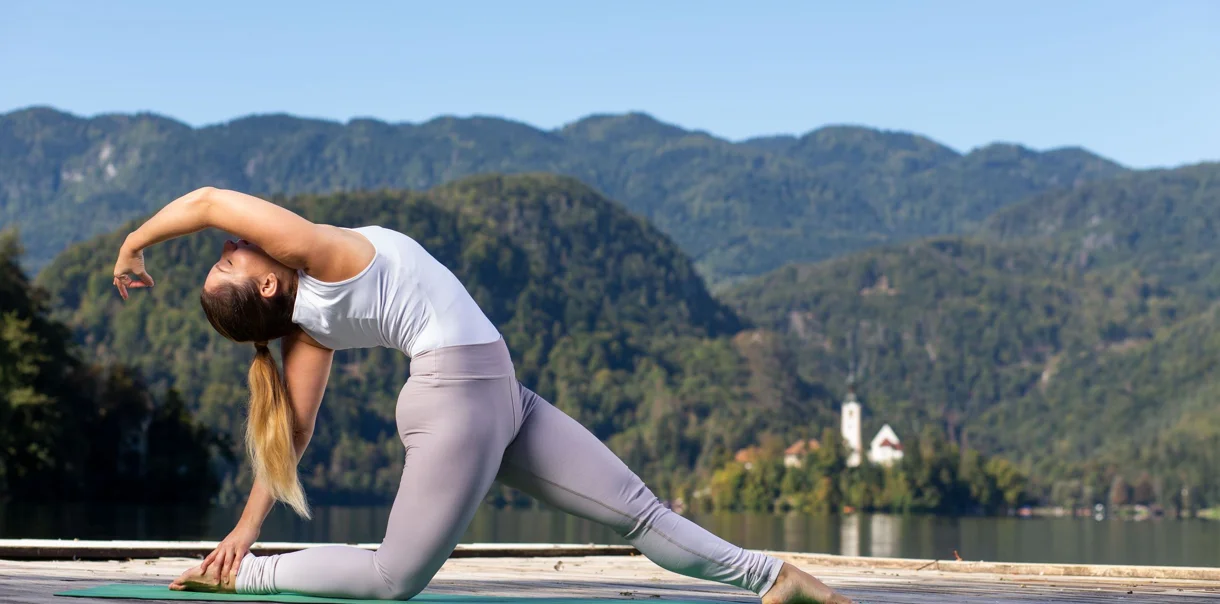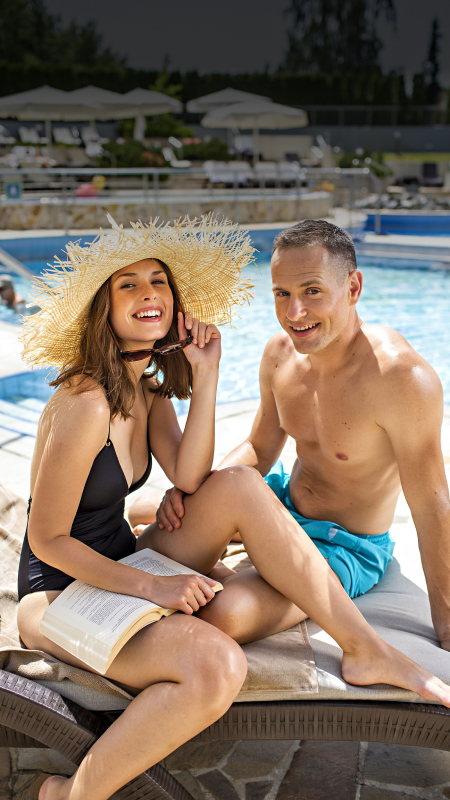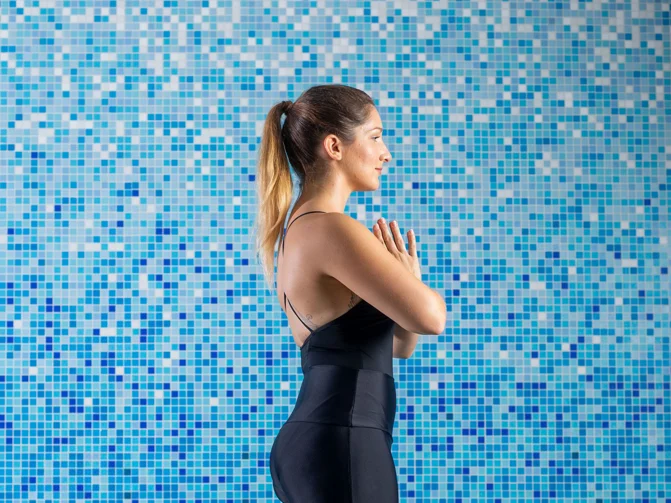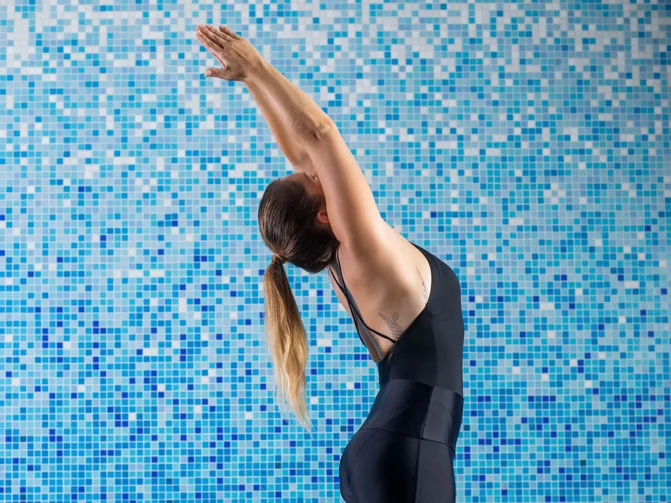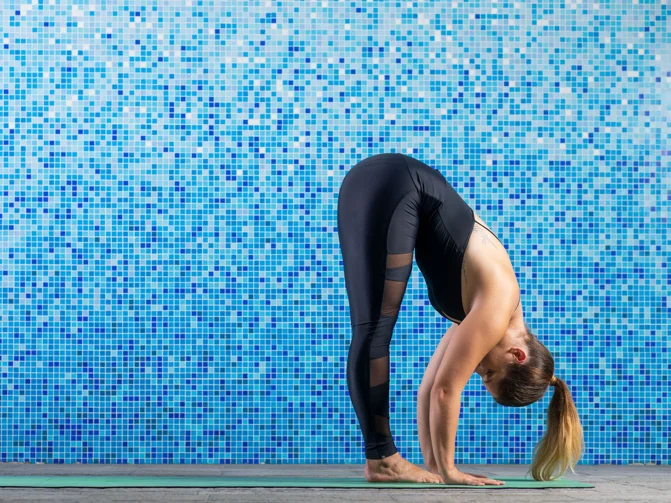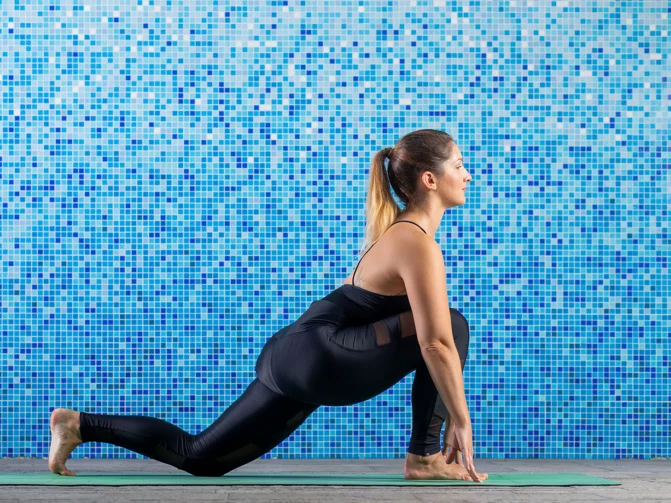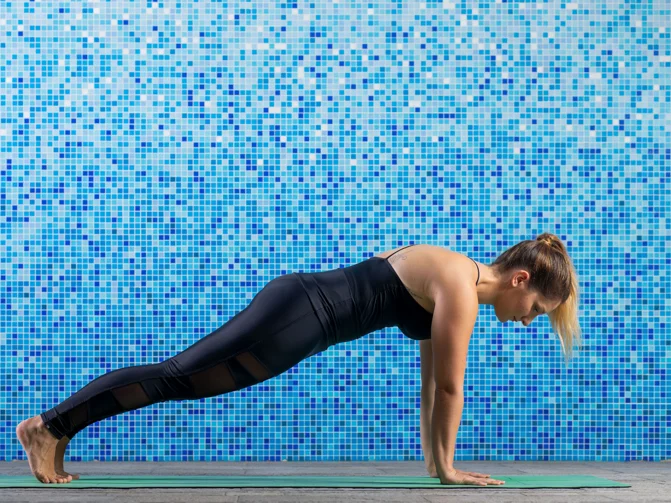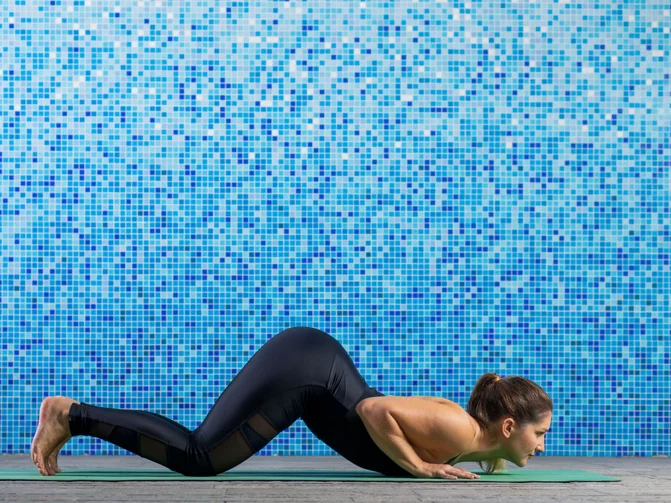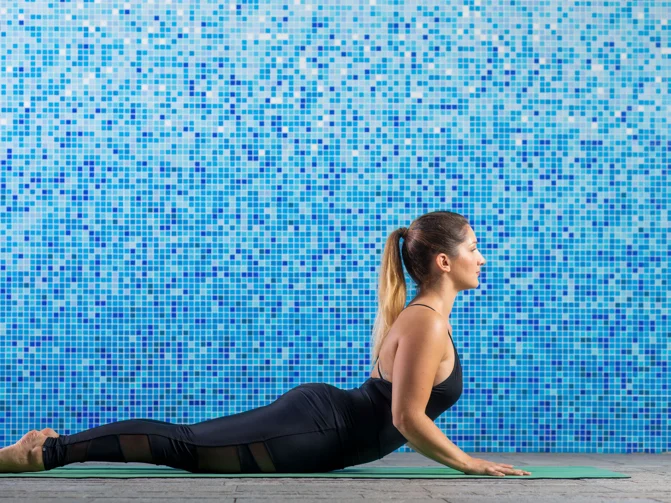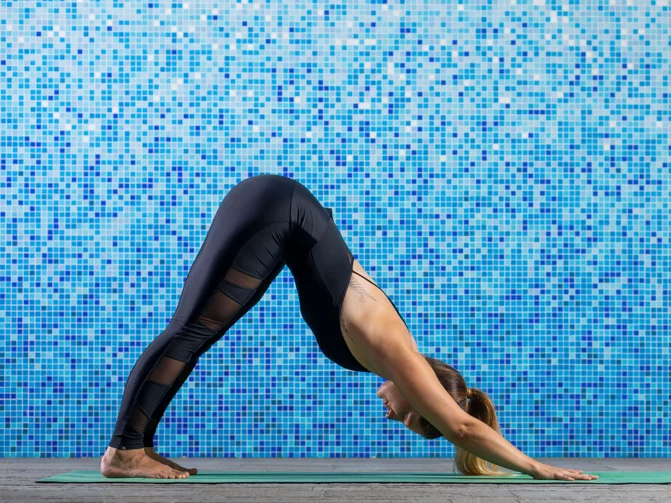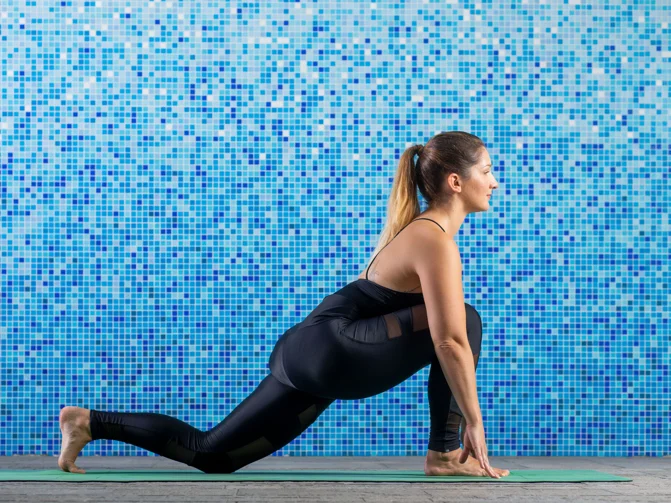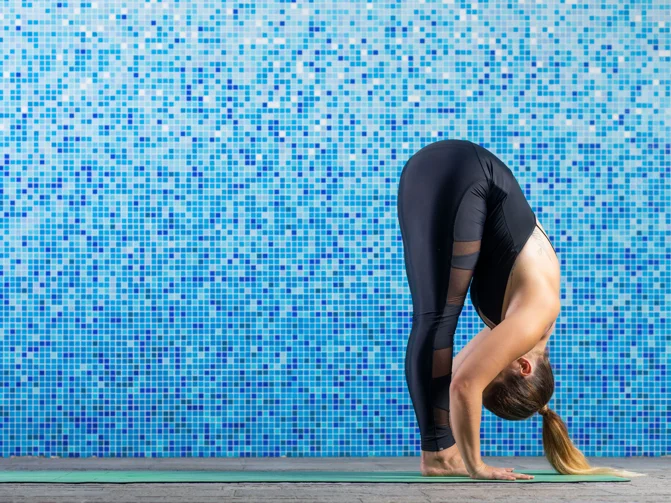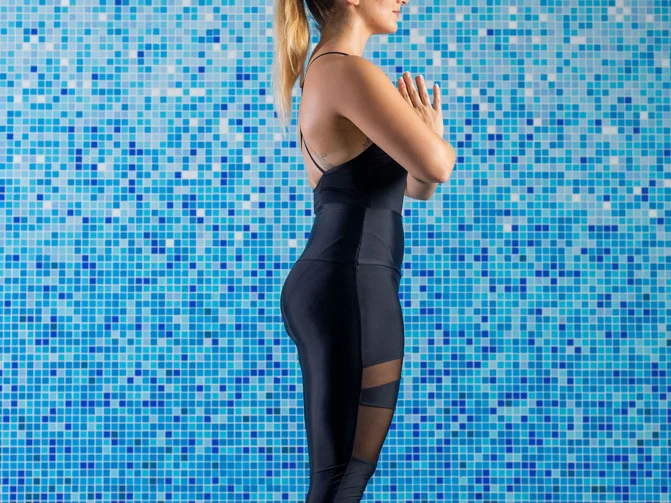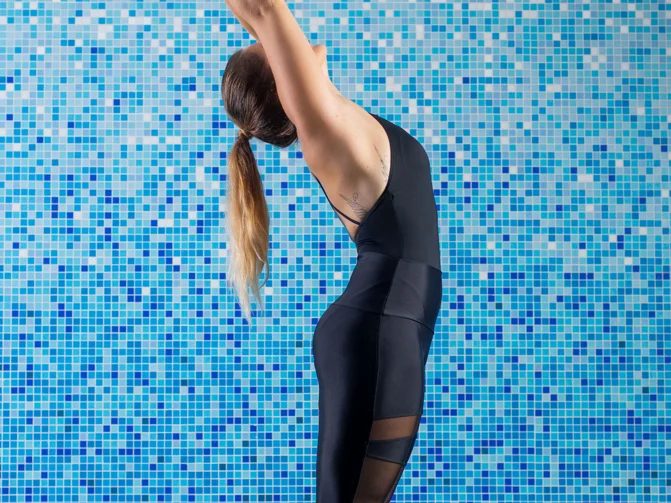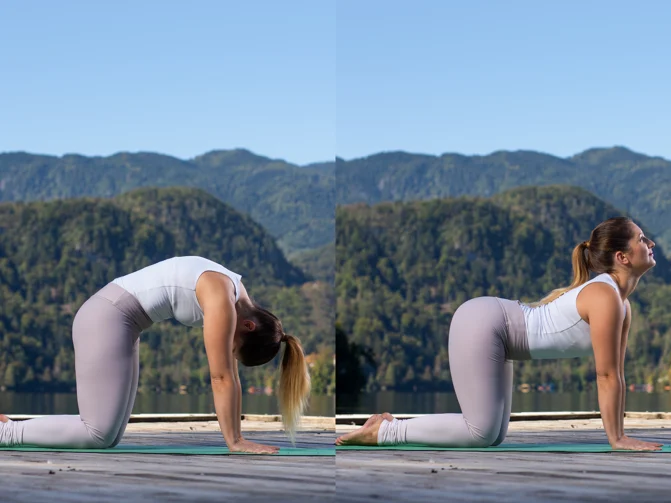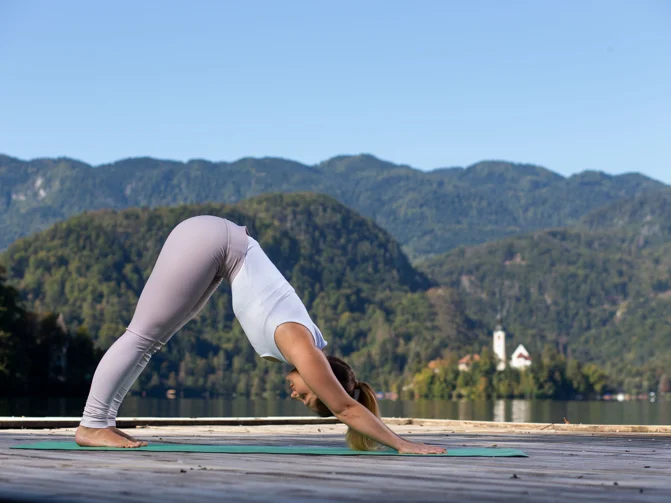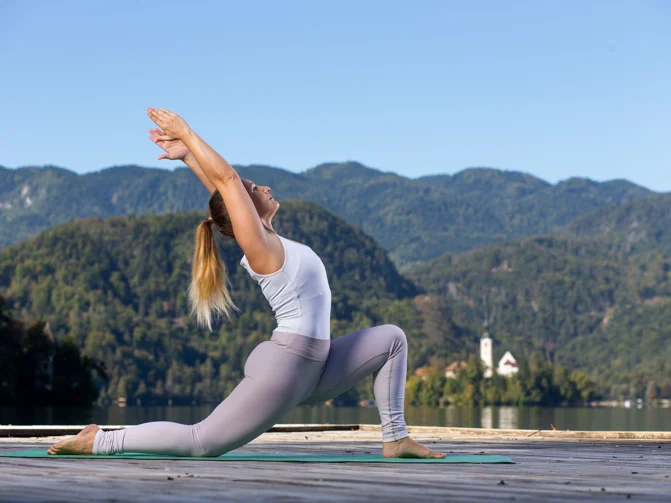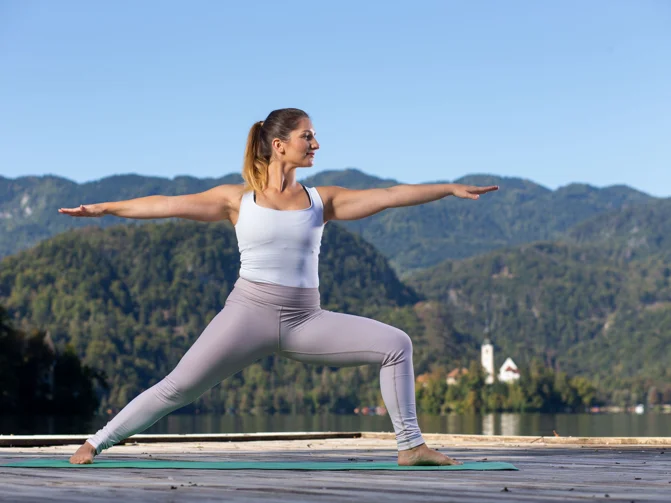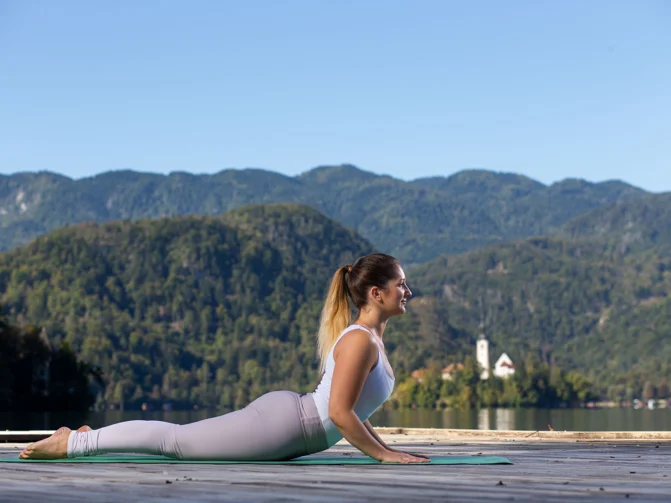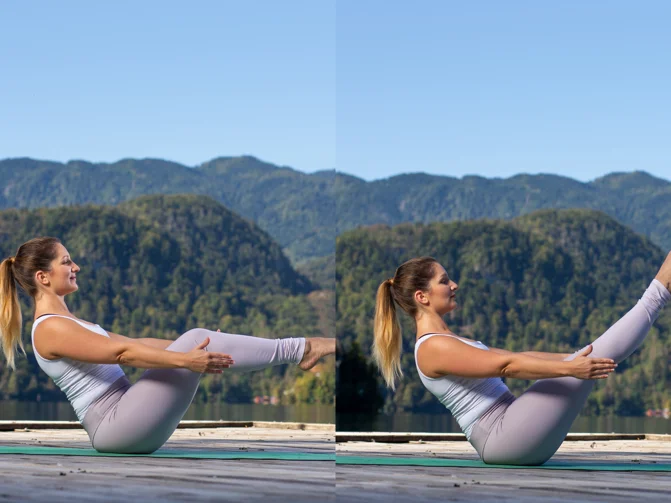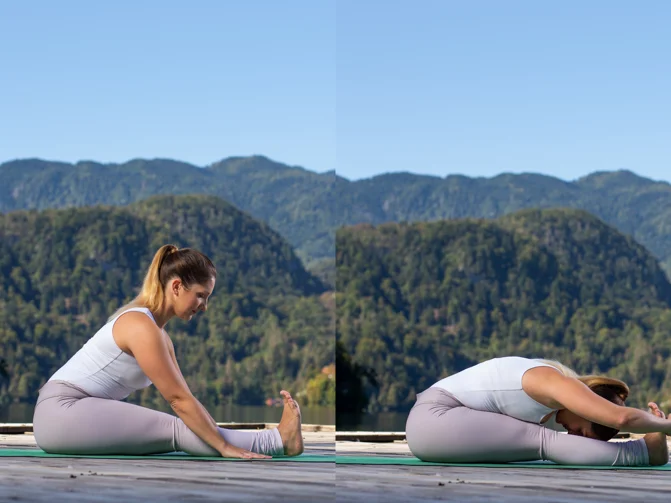Surya Namaskara or sun salutation is a series of postures that warms our body, strengthens it and increases its flexibility. Every movement or transition from position to position is coordinated with breathing - inhalation or exhalation, which always takes place only through the nose. There are several variations of this exercise. Here is a basic version of this classic sequence. Salutation to the sun can be used as a warm-up for further exercise or as an independent exercise when we do not have much time, but we still want to do something for ourselves. Just a few repetitions of this sequence makes a big difference in how we feel. It is performed at a faster pace for warming up and cardio, and at a slower pace for increasing endurance and strengthening muscles.
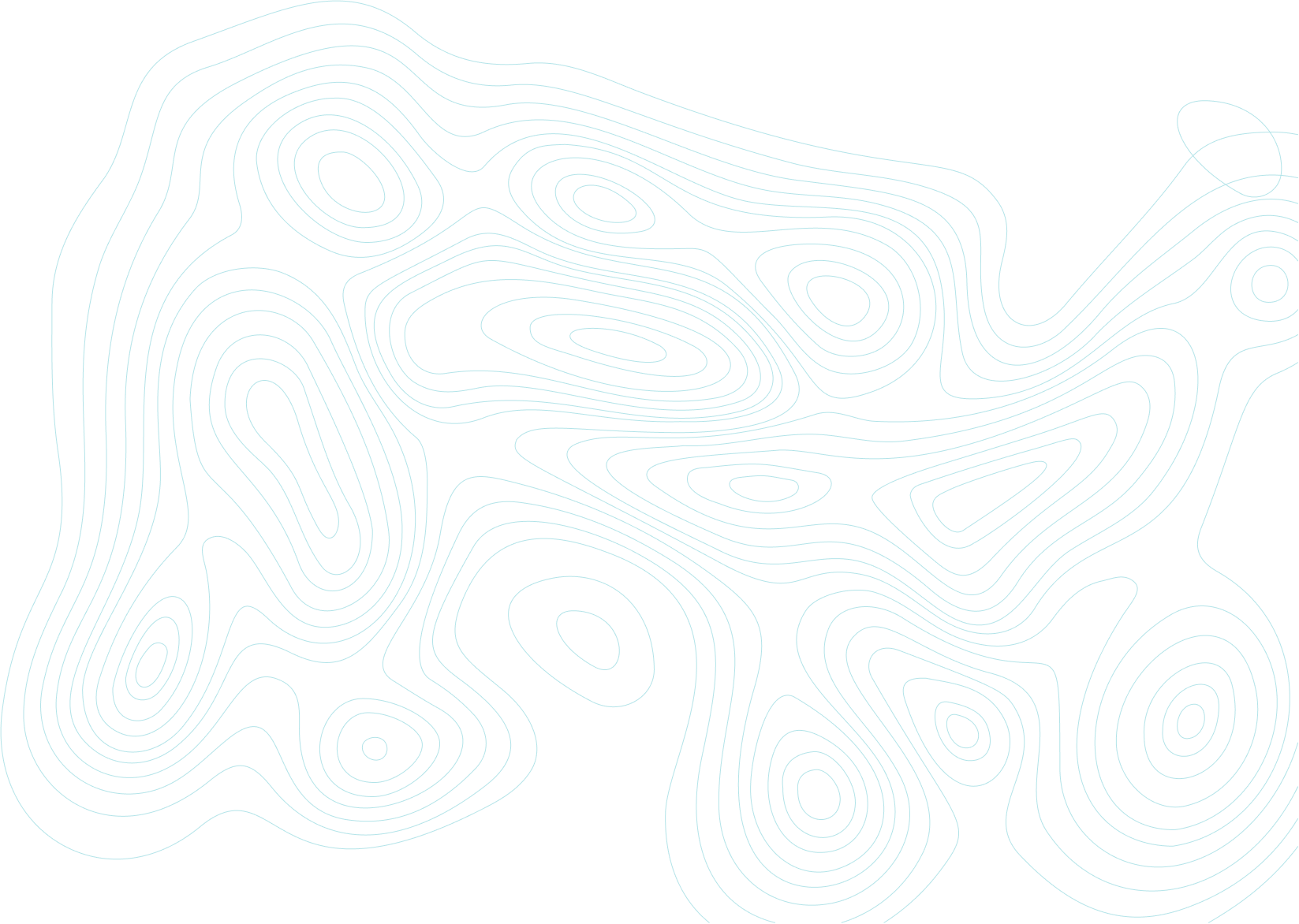
Active recreation / Yoga for the balance of the mind and the body
Yoga is more than just relaxation, it is a way of life. With regular practice of this ancient spiritual technique, we gradually develop harmony of the body, mind and spirit, which significantly contributes to our health. Yoga is for everyone, regardless of your age. Comb through the branches of yoga to find the type that suits your personality the best and that you need the most. We suggest that you visit the reception desk of your Sava Hotels & Resorts destination in the most beautiful parts of Slovenia, and borrow a yoga mat and brochure with exercises prepared by Polona Kolar, the certified yoga instructor, and embark on the path of restoring your inner peace.
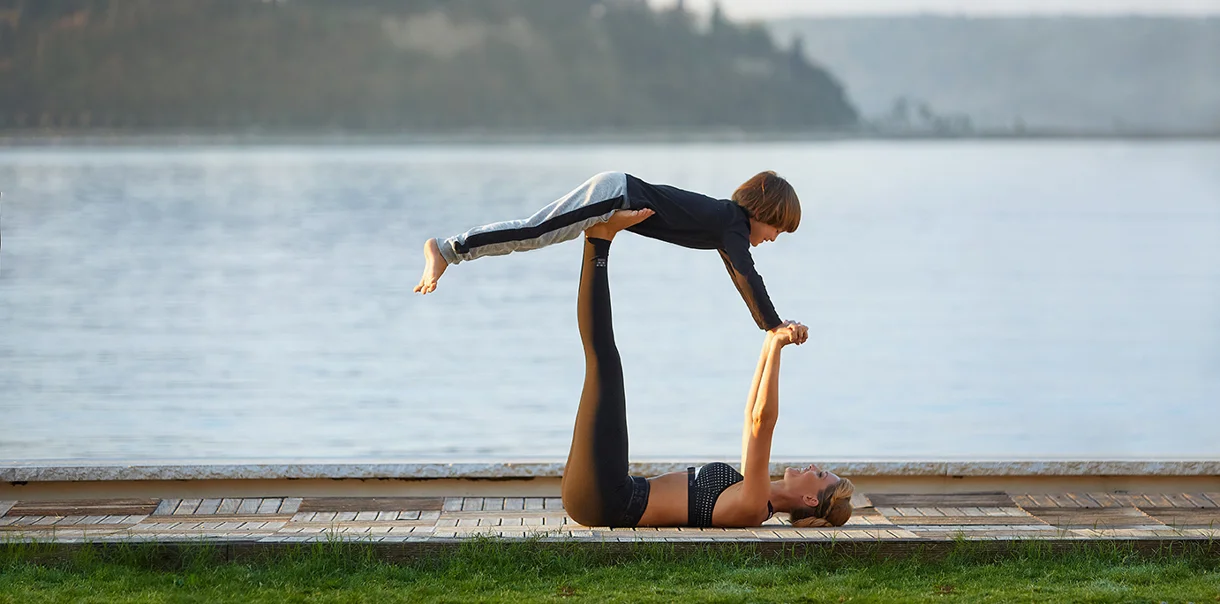
Sun Salutation - Surya Namaskara
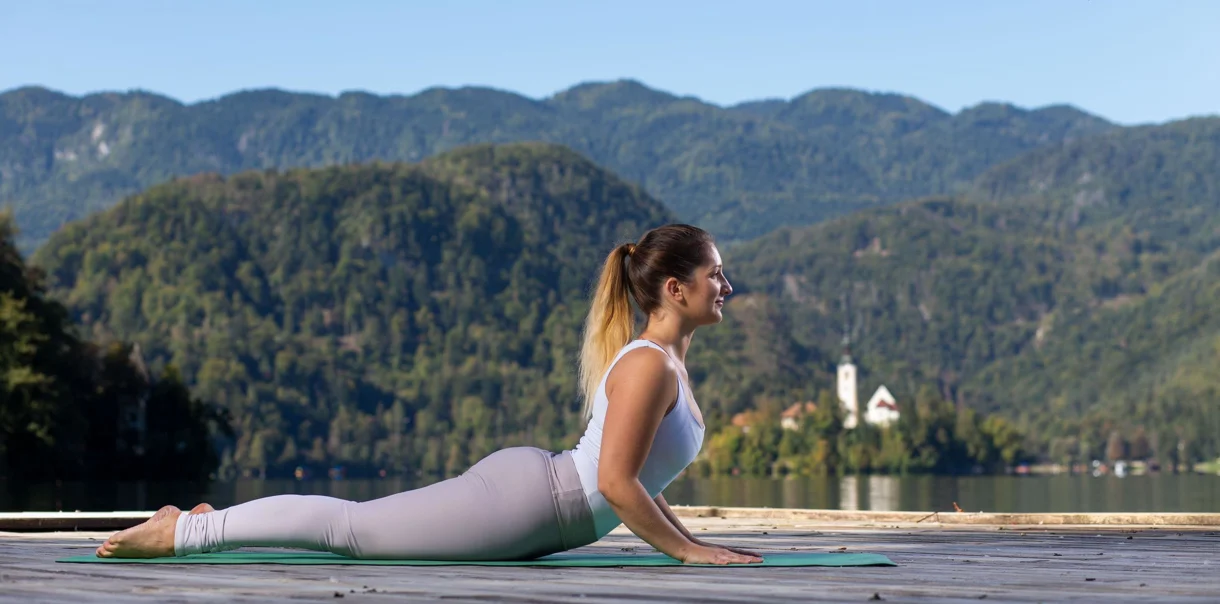
How to do Sun Salutation
One set of the sun salutation shown below consists of two repetitions of the entire sequence – once on the right and once on the left. At the beginning, we can only do one or two series, but then we gradually increase the number according to our wishes and needs.
Exercises for the balance of the body and mind
The following is a sequence of nine yoga asanas, which includes all types of movements: poses for strengthening and endurance, stretches, openings and twists. You can perform them independently or perform the sun salutation described above before them in order to warm up. All exercises are coordinated with a long and deep breath, which completes the whole and brings balance to the body and mind. Before starting, sit for a few minutes in a position that is comfortable for you and which allows you to keep your spine straight and upright. Close your eyes and focus on your breath. First, just observe your breath, but then consciously deepen and lengthen it. Breathe through your nose. After a few minutes, open your eyes and start the sequence. Repeat the same at the end, when you finish the exercise.
